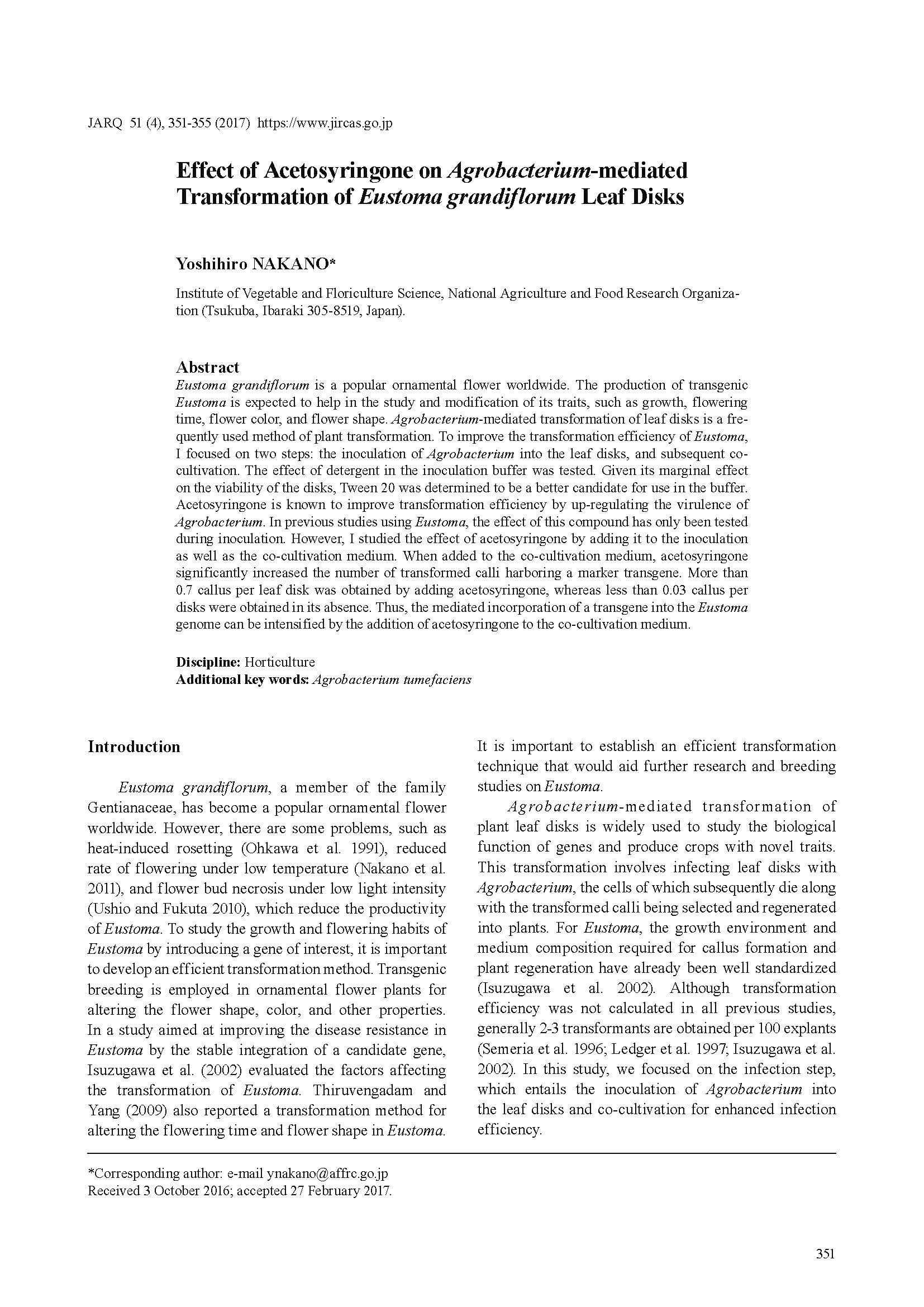Eustoma grandiflorum is a popular ornamental flower worldwide. The production of transgenic Eustoma is expected to help in the study and modification of its traits, such as growth, flowering time, flower color, and flower shape. Agrobacterium-mediated transformation of leaf disks is a frequently used method of plant transformation. To improve the transformation efficiency of Eustoma, I focused on two steps: the inoculation of Agrobacterium into the leaf disks, and subsequent cocultivation. The effect of detergent in the inoculation buffer was tested. Given its marginal effect on the viability of the disks, Tween 20 was determined to be a better candidate for use in the buffer. Acetosyringone is known to improve transformation efficiency by up-regulating the virulence of Agrobacterium. In previous studies using Eustoma, the effect of this compound has only been tested during inoculation. However, I studied the effect of acetosyringone by adding it to the inoculation as well as the co-cultivation medium. When added to the co-cultivation medium, acetosyringone significantly increased the number of transformed calli harboring a marker transgene. More than 0.7 callus per leaf disk was obtained by adding acetosyringone, whereas less than 0.03 callus per disks were obtained in its absence. Thus, the mediated incorporation of a transgene into the Eustoma genome can be intensified by the addition of acetosyringone to the co-cultivation medium.

